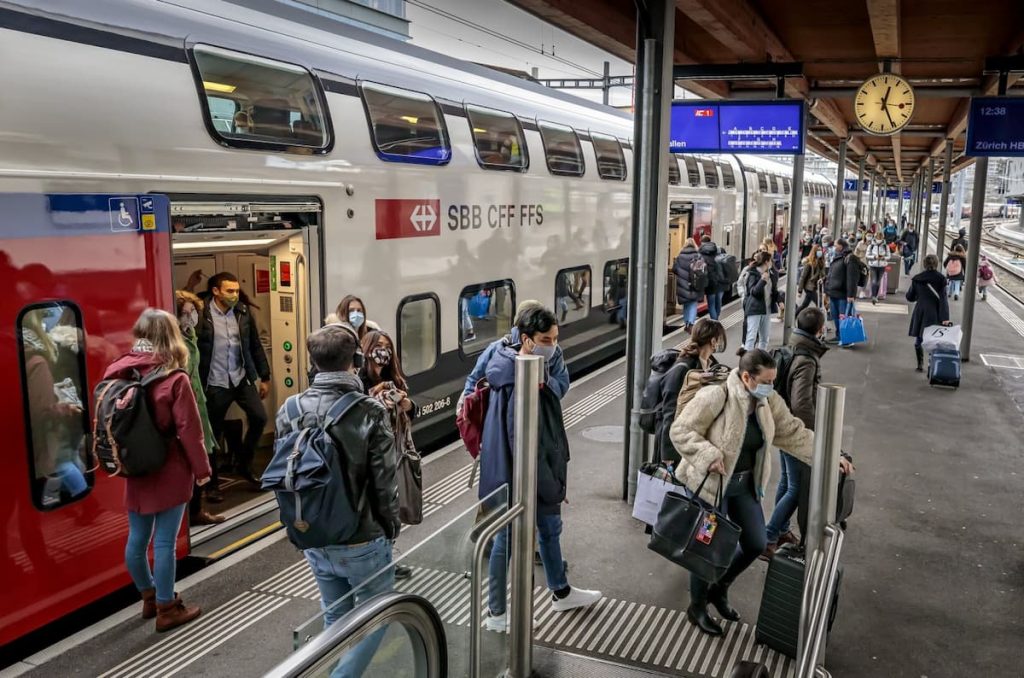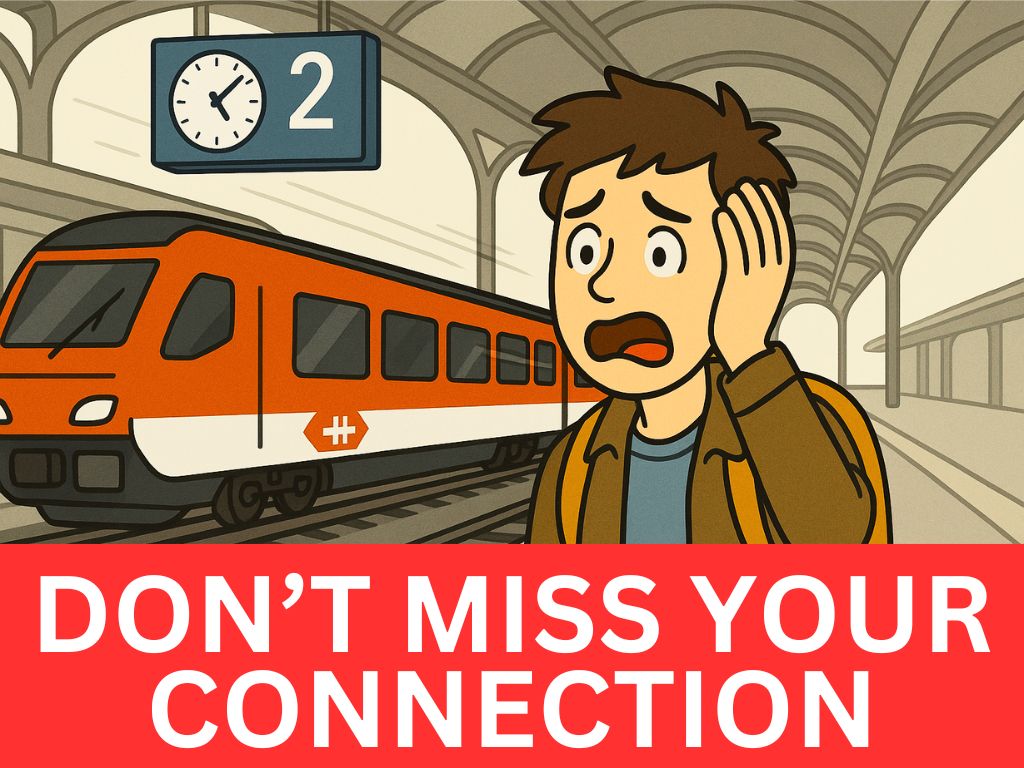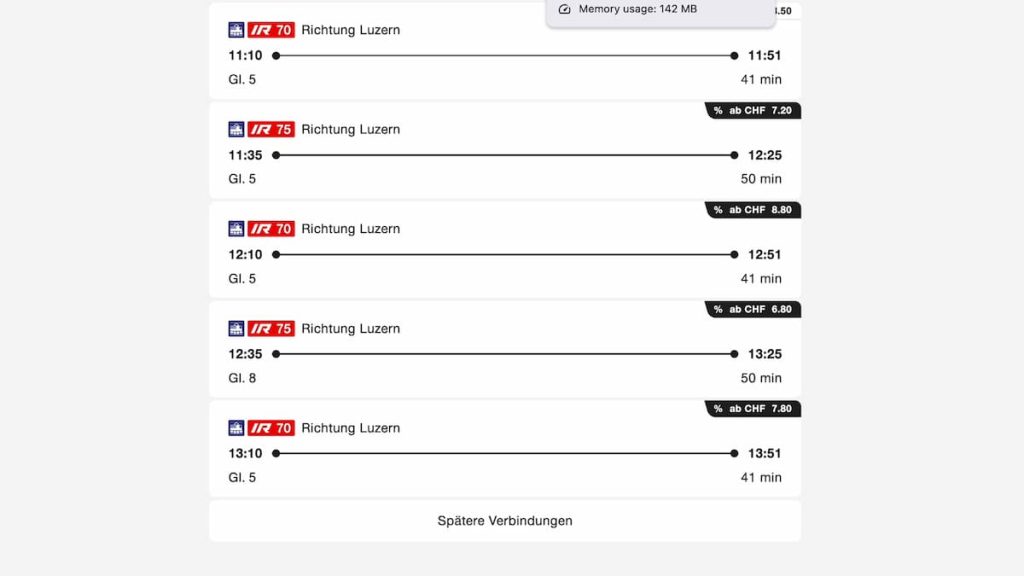It can even happen in Switzerland! The land of famously punctual trains.
One small delay, a tight connection, or a moment’s hesitation, and suddenly you’re left watching your connecting train glide out of the station without you.
If this has ever happened (or if you’re worried it might when you come visit), don’t panic.
Here’s what to do in different scenarios, how to avoid them altogether, and how to travel like a Swiss local!
Scenario 1: Missed Connection (Regular Ticket or Swiss Travel Pass)
So you missed your train connection. Maybe your previous train was late, or you simply didn’t move fast enough between platforms.
The good news is that with a regular (non-supersaver) SBB ticket or a Swiss Travel Pass, you can simply hop on the next available train along the same route — no need to buy a new ticket.
Here’s what to do:
- Open the SBB Mobile App or check the nearest digital timetable board.
- Enter your destination again — the app will instantly show the next trains, times and platforms
- Most Swiss routes have frequent connections, often every 30–60 minutes.
If your delay was caused by a late-arriving SBB train, staff can confirm this and sometimes offer assistance, especially if it’s the last connection of the day.
👉👉 Pro tip: Save the SBB Mobile app’s offline timetable for your main routes — it works even without internet access.
Scenario 2: Missed Connection (Supersaver Ticket)
Supersaver tickets are amazing for saving money, but they come with strict rules:
Super Saver tickets are only valid only for the exact train schedule/connections you have booked.
If you miss that connection, even by a few minutes, your ticket technically becomes invalid. (They are selling you the ticket because those trains are less popular/less busy)
Want To Save This For Later?
However, there’s some nuance here:
- If you missed your connection due to a delay caused by the SBB train company, they often show leniency. Visit the SBB Travel Center or use the contact form in the app to explain what happened.
- If it was your own delay (for example, grabbing coffee or getting lost), you’ll need to buy a new ticket for the next train.
So, if you plan on using Super Saver tickets (which are different from Day Saver Passes), be 100% sure you can make that train connection (no delayed incoming flights, no tight connections during peak times, etc.).
👉👉 Pro tip: Avoid connections shorter than 10 minutes when using Supersaver fares, especially in large stations like Zurich HB or Bern.
👉👉 Grab my Train Travel Guides here
Scenario 3: Getting Ready for a Tight Connection

The best way to avoid stress is to prepare before your train arrives.
Here’s how locals do it:
- Check your next platform and departure time (in advance) — the SBB app shows exactly where your next train departs.
- Know the station layout. In Zurich or Lucerne, some platforms require quick transfers or level changes.
- Five minutes before arrival, gather your belongings and move toward the door. Don’t wait until the train stops — Swiss trains unload quickly.
- Follow the signs. Connections are clearly marked with arrows and platform numbers.
Pro tip: If your connection time is less than five minutes, sit near the exit doors of your train so you can get off fast and avoid crowds.
Avoid the Panic Next Time
Missing a connection isn’t the end of the world, but it’s stressful, especially when you’re not sure what to do next. Learning how to read Swiss timetables, use the SBB app confidently, and plan realistic connections can make your trip smooth, easy, and enjoyable.
That’s exactly what I cover in my Train Travel guides:
- How to use the SBB app like a local (one specific guide)
- Swiss train travel made easy
Grab your copy today and make sure the next time you run for a connection… you actually catch it.




